Related Research Articles
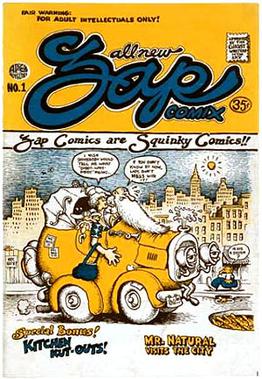
Underground comix are small press or self-published comic books that are often socially relevant or satirical in nature. They differ from mainstream comics in depicting content forbidden to mainstream publications by the Comics Code Authority, including explicit drug use, sexuality, and violence. They were most popular in the United States in the late 1960s and 1970s, and in the United Kingdom in the 1970s.
A minicomic is a creator-published comic book, often photocopied and stapled or with a handmade binding. In the United Kingdom and Europe the term small press comic is equivalent with minicomic, reserved for those publications measuring A6 or less.
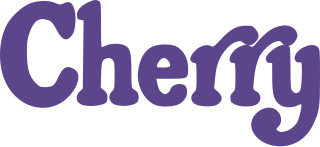
Cherry is an erotic comic book about a sexually adventurous 18-year-old woman and her friends, written and drawn by Larry Welz.

Last Gasp is a San Francisco–based book publisher with a lowbrow art and counterculture focus. Owned and operated by Ron Turner, for most of its existence Last Gasp was a publisher, distributor, and wholesaler of underground comix and books of all types.

Gothic Blimp Works, an all-comics tabloid published in 1969 by Peter Leggieri and the East Village Other, was billed as "the first Sunday underground comic paper". During its eight-issue run, the publication displayed comics in both color and black-and-white. The first issue was titled Gothic Blimp Works Presents: Jive Comics.
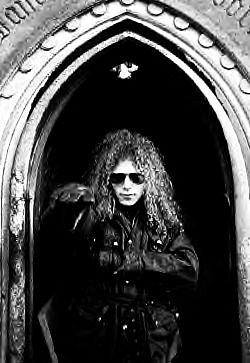
Vaughn Bodē was an American underground cartoonist and illustrator known for his character Cheech Wizard and his artwork depicting voluptuous women. A contemporary of Ralph Bakshi, Bodē has been credited as an influence on Bakshi's animated films Wizards and The Lord of the Rings. Bodē has a huge following among graffiti artists, with his characters remaining a popular subject.
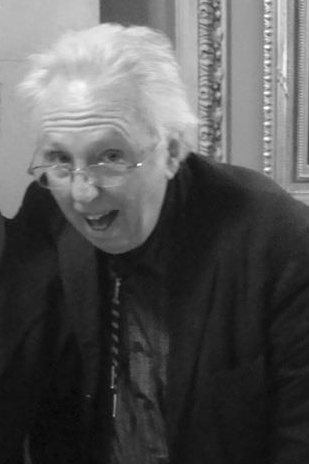
William Henry Jackson Griffith is an American cartoonist who signs his work Bill Griffith and Griffy. He is best known for his surreal daily comic strip Zippy. The catchphrase "Are we having fun yet?" is credited to Griffith.
Cobalt 60 is a science fiction comics series created by underground cartoonist Vaughn Bodē. After appearing in one story in 1968, the character lay dormant for almost 20 years. In 1984, Cobalt 60 was revived by Vaughn Bodē's son Mark Bodé and writer Larry Todd.
Jack Edward Jackson, better known by his pen name Jaxon, was an American cartoonist, illustrator, historian, and writer. He co-founded Rip Off Press, and some consider him to be the first underground comix artist, due to his most well-known comic strip God Nose.
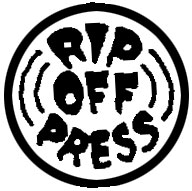
Rip Off Press Inc. is a comic book mail order retailer and distributor, better known as the former publisher of adult-themed series like The Fabulous Furry Freak Brothers and Rip Off Comix, as well as many other seminal publications from the underground comix era. Founded in 1969 in San Francisco by four friends from Austin, Texas — cartoonists Gilbert Shelton and Jack Jackson, and Fred Todd and Dave Moriaty — Rip Off Press is now run in Auburn, California, by Todd.

Cheech Wizard is an American underground comics character created by artist Vaughn Bodē. Vaughn created Cheech Wizard on September 26, 1957, at the age of 15. He drew a hat with stars on it with legs sprouting out from beneath the oversized hat. Vaughn spotted a can of Cheechie Nuts on his kitchen table and coined the characters name Cheech Wizard. In 1964 Vaughn furthered the character and did an unpublished strip in his journal. In 1967 Cheech appeared in a small self-published black and white comic. The Collected Cheech Wizard was published as a comic by Company and Sons in 1972. In 1973, Last Gasp publishers issued the new comic Cheech Wizard Suck my Turnip. From 1972 to 1975 the strips also appeared in National Lampoon. It is said no one knows who is under the hat, but Vaughn confided in his son Mark that Cheech Wizard was his creator's alter ego and his son Mark was the Lizard apprentice. To look or discover who is under the hat was to look the creator in the eye and would render the viewer forever blind. The Wizard is a bad mouthing, broad balling, fake of a wizard who often is found kicking his Lizard apprentice in the balls on more than one occasion. Cheech Wizard calls it the time distortion trick. The Cheech Wizard has often been copied in graffiti art, and has been referenced in pop music, as in "Mistadobalina" by Del the Funky Homosapien and "Sure Shot" by The Beastie Boys.
Rory Hayes was an American underground cartoonist in the late 1960s and early 1970s. His comics were drawn in an expressionistic, primitivist style and usually dealt with grim subject matter such as paranoia, violent crime, and drug abuse. In addition to his own titles, Bogeyman and Cunt Comics, he was published in many of the most prominent comics in the underground scene, including Bijou Funnies and Arcade.
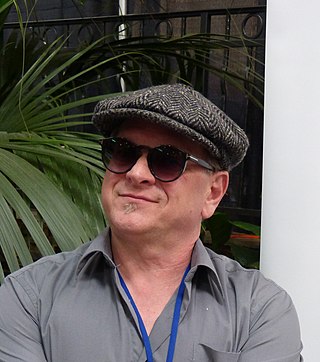
Mark Bodē ( born February 18, 1963) is an American cartoonist. The son of underground comics legend Vaughn Bodē, Mark shares the Bodē family style and perpetuates many of his late fathers creations as well as his own works. He is best known for his work on Cobalt-60, Miami Mice, and The Lizard of Oz. Bodē has also worked for Heavy Metal magazine and on The Teenage Mutant Ninja Turtles.
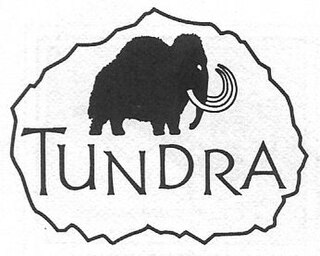
Tundra Publishing was a Northampton, Massachusetts-based comic book publisher founded by Kevin Eastman in 1990. The company was founded to provide a venue for adventurous, creator-owned work by talented cartoonists and illustrators. Its publications were noted in the trade for their high production values, including glossy paper stock, full-color printing, and square binding. Tundra was one of the earlier creator-owned companies, before the formation of Image Comics and Dark Horse Comics' Legends imprint.
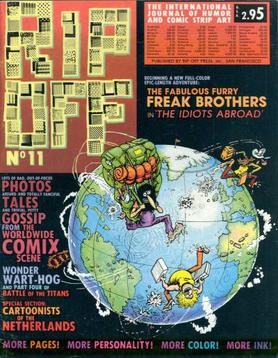
Rip Off Comix was an underground comix anthology published between 1977 and 1991 by Rip Off Press. As time passed, the sensibility of the anthology changed from underground to alternative comics.

Diane Robin Noomin was an American comics artist associated with the underground comics movement. She is best known for her character DiDi Glitz, who addresses transgressive social issues such as feminism, female masturbation, body image, and miscarriages.
Lawrence Edward Welz is an American cartoonist who created Cherry Poptart. He was an early contributor to the underground comix movement in the San Francisco area during the late 1960s and early 1970s. He graduated from Bakersfield High School.
Gary Edson Arlington was an American retailer, artist, editor, and publisher, who became a key figure in the underground comix movement of the 1960s and 1970s. As owner of one of America's first comic book stores, the San Francisco Comic Book Company, located in San Francisco's Mission District, Arlington's establishment became a focal point for the Bay Area's underground artists. He published comics under the name San Francisco Comic Book Company, as well as publishing and distributing comics under the name Eric Fromm. Cartoonist Robert Crumb has noted, "Gary made a cultural contribution in San Francisco in the late 1960s, through the '70s, '80s & '90s that was more significant than he realizes."

Company & Sons was an early underground comix publisher based in San Francisco, ran by John Bagley. The company operated from 1970 to 1973, publishing a total of 15 titles, all but one of them consisting of a single issue.
Willy Murphy was an American underground cartoonist. Murphy's humor focused on hippies and the counterculture. His signature character was Arnold Peck the Human Wreck, "a mid-30s beanpole with wry observations about his own life and the community around him." Murphy's solo title was called Flamed-Out Funnies; in addition, he contributed to such seminal underground anthologies as Arcade, Bijou Funnies, and San Francisco Comic Book, as well as the National Lampoon.
References
- ↑ Rip Off Comix #16 (1987).
- 1 2 3 Todd entry, Who's Who of American Comics Books, 1928–1999. Accessed Sept. 19, 2016.
- 1 2 Lambiek
- ↑ Markstein, Don. Don Markstein's Toonopedia.
- ↑ "Fires Sweep Homes of Two Cartoonists," The Comics Journal #130 (July 1989), p. 6.
- ↑ Fire Sale: a Benefit for Larry Todd (Rip Off Press, 1989).
- ↑ Welz, Larry. "Smoking Crater," LarryWelz.com (August 16, 2010).